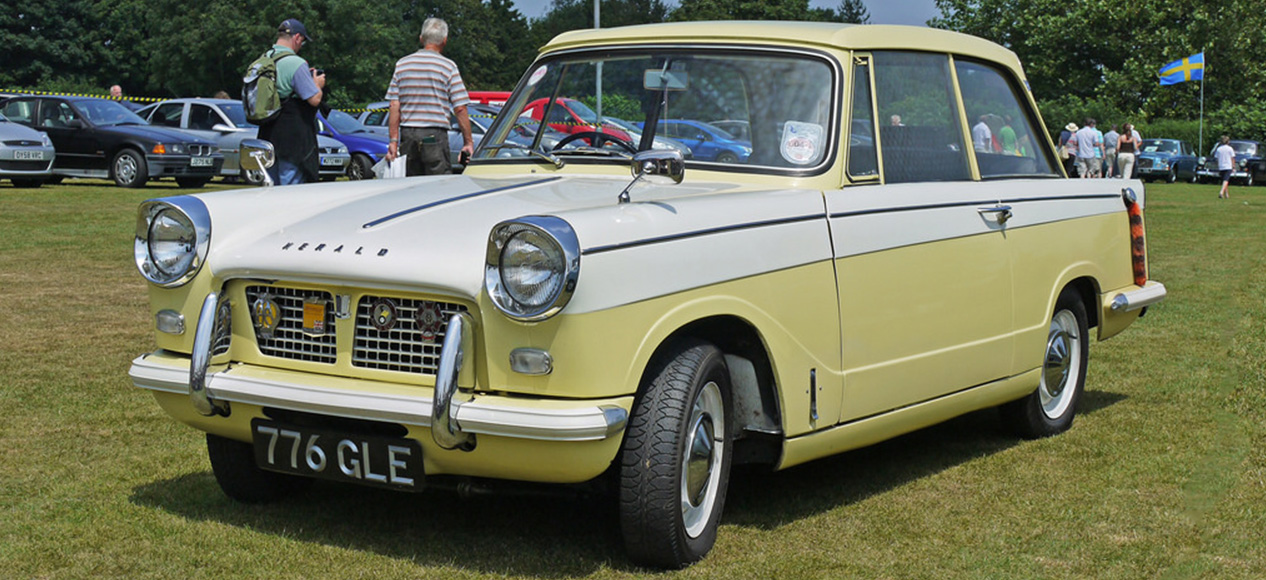During the heydey of the Triumph Motor Company, the motors being produced were some of the most exciting vehicles on the market. Automobiles like the Stag and Spitfire were gorgeous models that appealed to a worldwide audience. Another striking model was the Triumph Herald. With its razor-edge styling, the Herald joined the ranks of the company’s finest offerings. We’re looking into the history of the car to see how it was designed.
Creation
In the 1950s, Triumph commissioned Giovanni Michelotti to design an update for the range of two-seater Standard saloons. Encouraged by chief engineer Harry Webster, Michelotti created a vehicle that had a large glass area and razor-edge appearance that was becoming a popular design technique.
It was decided the car should have a seperate chassis rather than adopting a unitary construction. The main body tub was bolted to the chassis and the front end hinged forward to provide access to the engine. Each panel could be unbolted so the different styles could be easily built on the same chassis.
The Herald was equipped with a speedometer, fuel and temperature gauges and lockable glove box. Various extras were available, such as leather seats, twin SU carburetors and a wood-decorated dashboard.
In 1958, Herald prototypes went on a test run from Cape Town to Tangiers. The Herald was officially launched at the Royal Albert Hall in 1959, yet it wasn’t an immediate success due to the expensive price tag of £700. The Herald was praised for its steering and simple repair process, though it received criticism for poor handling.
Variants
In the 1960s, Triumph suffered from financial troubles, leading to it being taken over by Leyland Motors. This gave the company new resources and they redeveloped the Herald. The new version, released in 1961, came with a 1147 cc engine, improved seating and enhanced quality control.
The Herald 1200 went over well with the public and sales increased. This was during a time where Triumph were competing with the BMC Mini and Ford Anglia. Other variants were made over the next couple of years, including the Triumph courier van, Herald 12/50 and Herald 13/60.
By the end of production life, Herald sales had reached over half a million. It served as the blueprint to other important models like the Spitfire and GT6, which were based on modified Herald chassis.



